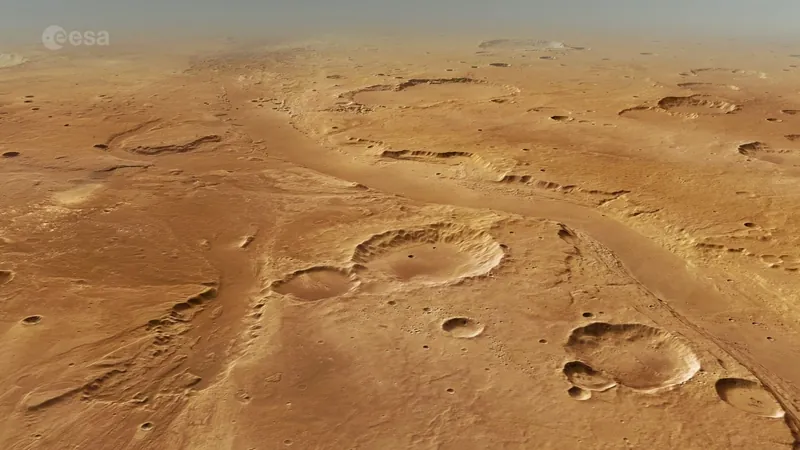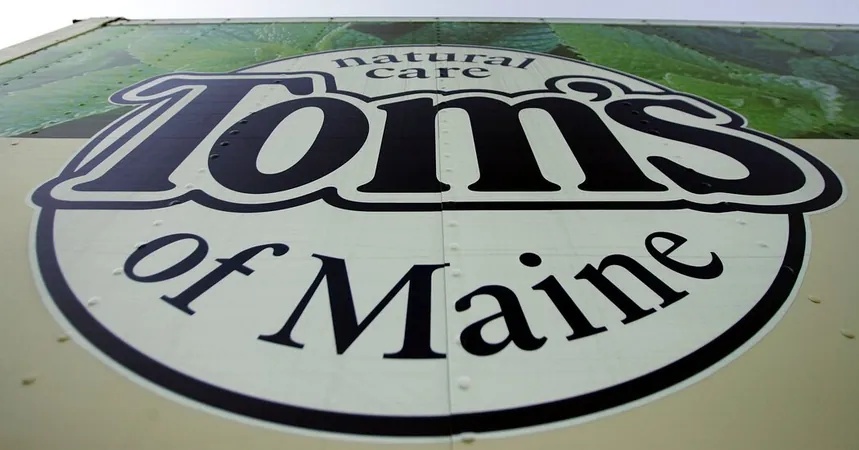
Discover the Wonders of Ares Vallis on Mars: A Stunning Journey Through Time and Water
2024-11-21
Author: Wai
Explore the immense and transformative power of water as the European Space Agency’s (ESA) Mars Express leads us on an extraordinary flight across the Ares Vallis region of Mars. Witness the spectacular landscapes shaped by ancient water flows, including sweeping channels, streamlined islands, and the bewildering ‘chaotic terrain’ that characterizes this captivating Martian environment.
Our virtual tour begins in the Oxia Palus area of the Red Planet, which covers an expansive region of approximately 890,000 km²—an area more than twice the size of Germany. Ares Vallis, one of Mars’ largest outflow channels, stretches over 1,700 km and is believed to have been a powerful artery for water, cascading from the southern highlands into the lower plains of Chryse Planitia.
Billions of years ago, this region was a dynamic landscape where water surged through Ares Vallis and the nearby Tiu Vallis, carving out many features that we observe today. As we zoom in on our starting point, we will pass over the historic landing site of NASA's Pathfinder mission. In 1997, the Sojourner rover made its mark here, conducting groundbreaking exploration of the Ares Vallis floodplains for a remarkable 12 weeks.
As we venture south, we will glide over two significant craters: Masursky and Sagan. The partially eroded rim of the Masursky crater suggests that substantial water once flowed through it, likely draining from the nearby Tiu Vallis. The crater’s floor is littered with jumbled blocks, a clear indication of the tumultuous geological history of the area.
Further along our journey, we encounter Hydaspis Chaos, a prime example of chaotic terrain shaped by the forces of ancient water. This region’s disorderly appearance is attributed to sudden releases of subsurface water that caused the surface above it to slump and break apart into varied blocks—an impressive testament to Mars’ hydrologic past.
As we continue to Galilaei crater, we’ll note its highly eroded rim and a gorge that resembles a once-thriving waterway, suggesting that it may have held a lake that overflowed into the surrounding regions. Our path leads us to observe streamlined islands and terraced riverbanks, with teardrop-shaped island ‘tails’ aligned in the direction of ancient water flow.
Crossing back over Ares Vallis, we’ll arrive at the smoother terrain of Oxia Planum—the upcoming landing site for ESA’s ExoMars Rosalind Franklin rover. This mission aims to uncover signs of past or present life on Mars, with the water-rich landscape of Oxia Planum serving as an ideal candidate for exploration.
As we conclude our spectacular aerial journey, the breathtaking bird’s-eye view of Ares Vallis provides insight into this once-thriving Martian landscape, rich with the remnants of ancient water activity.
The film showcasing this incredible flight was crafted using data from Mars Express' High Resolution Stereo Camera. This stunning visual experience offers a three-dimensional view of the Martian surface, enriched with topographical data and atmospheric effects, bringing the majestic beauty of Ares Vallis to life like never before.
Stay tuned for more updates on Mars exploration! Will the upcoming missions unravel the mysteries of Martian water and its potential to harbor life? Only time will tell!

 Brasil (PT)
Brasil (PT)
 Canada (EN)
Canada (EN)
 Chile (ES)
Chile (ES)
 España (ES)
España (ES)
 France (FR)
France (FR)
 Hong Kong (EN)
Hong Kong (EN)
 Italia (IT)
Italia (IT)
 日本 (JA)
日本 (JA)
 Magyarország (HU)
Magyarország (HU)
 Norge (NO)
Norge (NO)
 Polska (PL)
Polska (PL)
 Schweiz (DE)
Schweiz (DE)
 Singapore (EN)
Singapore (EN)
 Sverige (SV)
Sverige (SV)
 Suomi (FI)
Suomi (FI)
 Türkiye (TR)
Türkiye (TR)